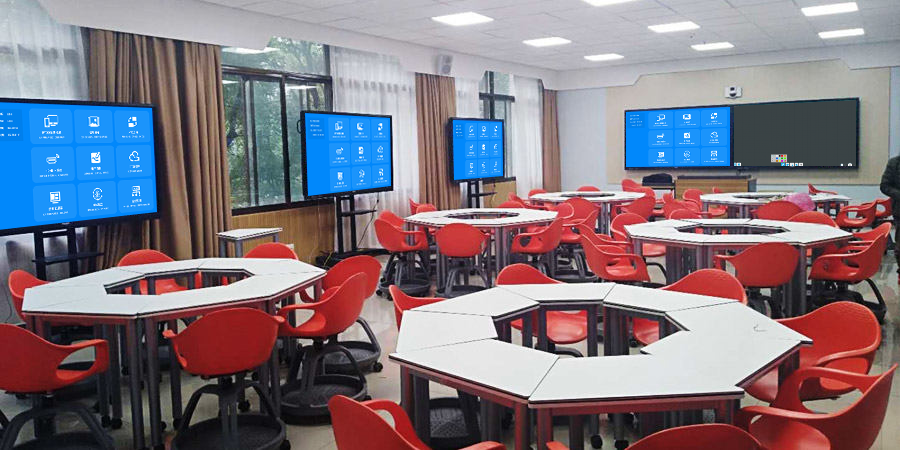Modern educational concepts emphasize students’ dominant role and collaborative inquiry abilities. The in-depth integration of wireless screen mirroring technology and group discussion teaching models provides a solid technical foundation for building truly
interactive classrooms.
Traditional audio-visual classrooms only enable one-way content display. In contrast, interactive classrooms emphasize real-time interaction, sharing, and co-creation between teachers and students, as well as among students—all facilitated by screens.
Focusing on a specific topic, group members use tablets to co-create mind maps or documents. They then share the content to the group’s display screen in real time via wireless screen mirroring, allowing all members to view, edit, and collaborate simultaneously.
Each group casts their final results to the classroom’s main screen at the same time through wireless screen mirroring. The teacher guides the whole class to compare, analyze, and comment on different solutions, fully realizing the teaching value of multi-screen interaction.
Teachers can carry a tablet to join any group. They can share guidance content (such as key points or sample answers) to the group’s screen via mobile screen mirroring, providing personalized support tailored to the group’s learning progress and needs.
Ensure the classroom’s Wi-Fi can support simultaneous wireless screen mirroring from multiple devices. Prioritize a high-bandwidth, low-latency network to avoid lags or disconnections during teaching.
Equip each group with an independent wireless screen mirroring device. This prevents signal interference between groups and ensures smooth content sharing within each group.
Adopt a display layout of “one main screen + multiple group split screens.” The main screen is used for whole-class sharing, while split screens support independent discussions within each group, adapting to the group discussion model.
Activating group discussions through wireless screen mirroring transforms classrooms from static knowledge transmission spaces into dynamic ability-development venues. This integration is the development direction of future education.

